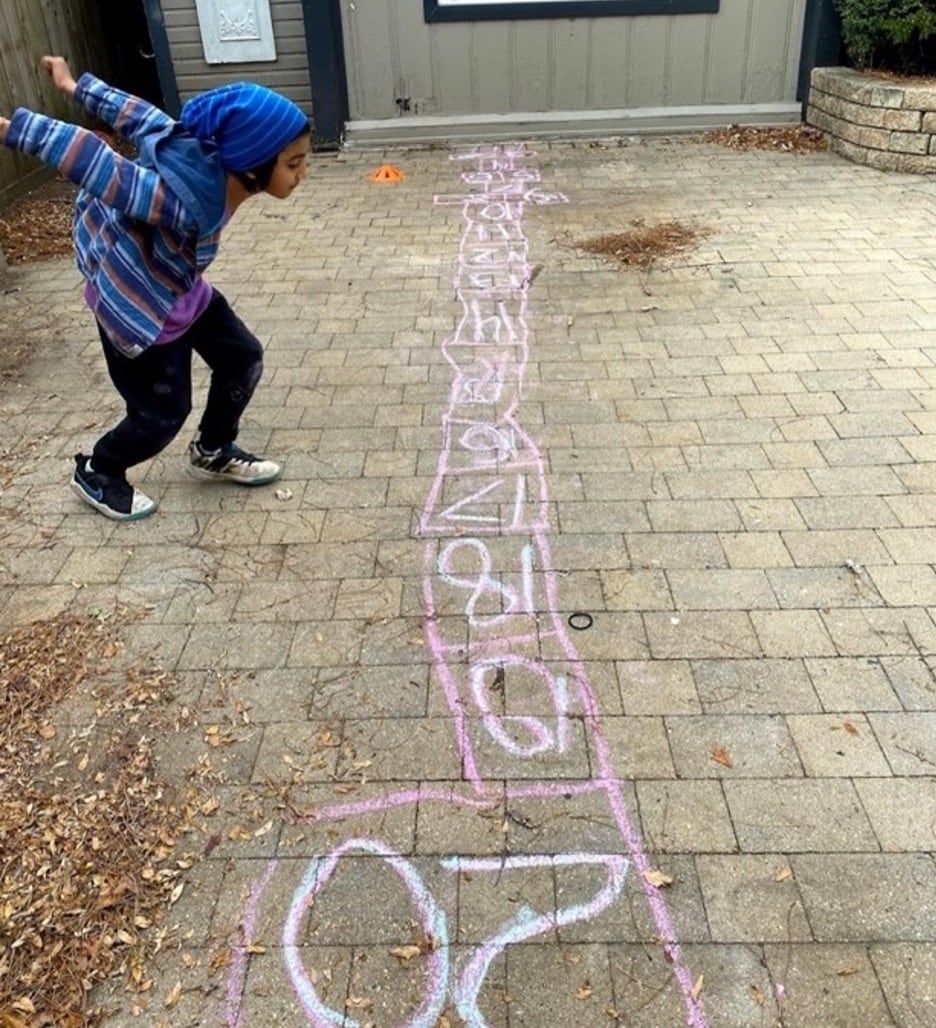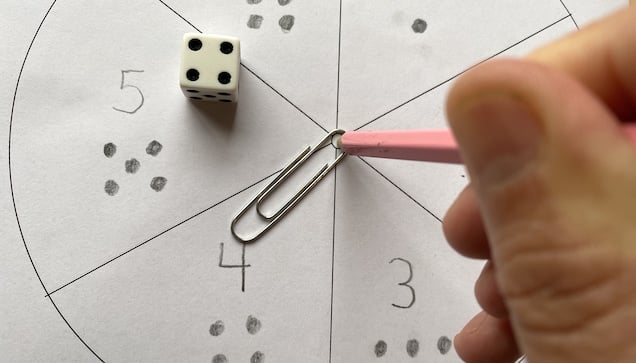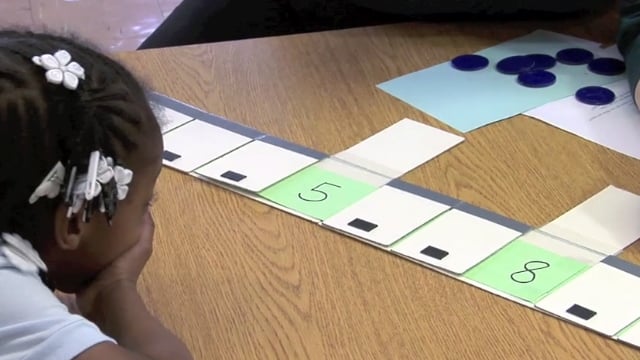Series: Ideas at Work
What is a Number Path and How Does It Build Number Relationships?

Many of children’s favorite board games follow a path to a goal. Exploring a number path with young children also leads to a goal that is critical for early mathematics: understanding number relationships.
What is a Number Path?
A number path is a visual model of our counting system. It simply shows the order of the natural numbers in a linear fashion. Natural numbers are also known as counting numbers because these numbers can be counted on our hands. For example, the numbers that we count on our hands are 1, 2, 3, 4, 5, 6, and so on.
A number path does not include 0 and only shows whole numbers—no fractions, no decimals, no negative numbers—so it’s a great place to start with preschool and kindergarten aged children.

How is a Number Path Different from a Number Line?
A number line is also a visual model of numbers in a straight line, but a key difference is that it is a measurement model. This means that numbers are placed at equal intervals along a given scale. Zero is the origin of the number line and it extends in both directions, representing both positive and negative numbers along with fractions and decimals. The magnitude, or size, of numbers is represented by their distance from zero.
For young children, it can be difficult to understand that a number line requires us to count the intervals of distance, not the tick marks or numerals themselves.

What Are the Advantages of a Number Path for Young Children?
In preschool and kindergarten, children have many opportunities to count blocks or other objects. As they count a set of objects, children don’t automatically think about how one number is related to another. Their goal is matching one number word at a time to one object until they reach the end of the set.
Number paths help children connect this “set-representation” view of numbers to a model that puts numbers in relationship to one another. The number path has great advantages in helping children understand the order and relative position of numbers.
Children need to explore how numbers relate to one another in order to build a robust and flexible number sense. Take the number 6 for example. Six is one more than 5 and two less than 8. A number path can help develop a rich understanding of numbers – their meanings, their relationships to one another, and how we operate with them.
How Can I Use Number Paths with Young Children?
Life-Size Number Paths
It’s easy to make a life-size number path with painter’s tape on the floor or using sidewalk chalk outdoors. There are many relationships that children can explore through movement and visualization such as numbers next to and numbers far away from their position on the path. Give children number riddles they can solve by moving forward and back on the number path. For example, “Stand on the number that is one more than 7.”

Number Path Board Games
Turn a number path into a simple board game. Children take turns rolling their die and moving a game piece along the path. The goal is to be the player whose game piece reaches the end first. A fun version is Jumping on the Lily Pad from the Young Mathematicians project at EDC. Click here for game materials including game boards to print and video directions.
Lift-the-Flap Number Paths
One of our favorite versions of a number path has flaps that cover each number. This is a playful opportunity to reason about hidden numbers using their relative positions. For younger children, start with numbers 1 to 10. For older students, you can shift the range higher—for example, 35 to 45. You can see this type of number path in the following videos, one from preschool (the first) and one from kindergarten (the second).
Related Ideas

Get on the Right Path: Make Your Own Number Sense Activities
Path games are fantastic ways for families to spend time together and have fun while doing math.

Using Number Paths with Child 9
A child counts forwards and backwards using a number path with hidden digits.
Photo by Austris Augusts on Unsplash